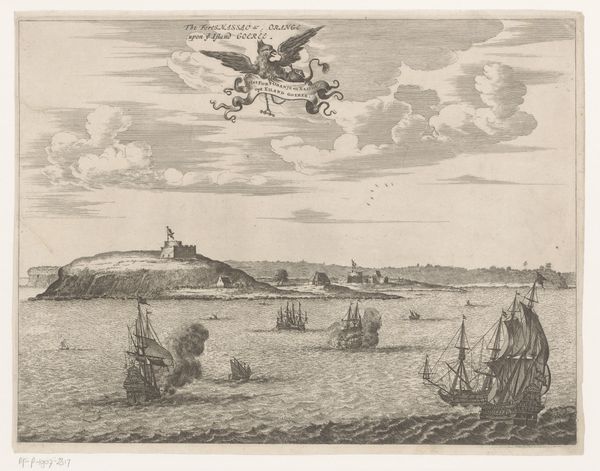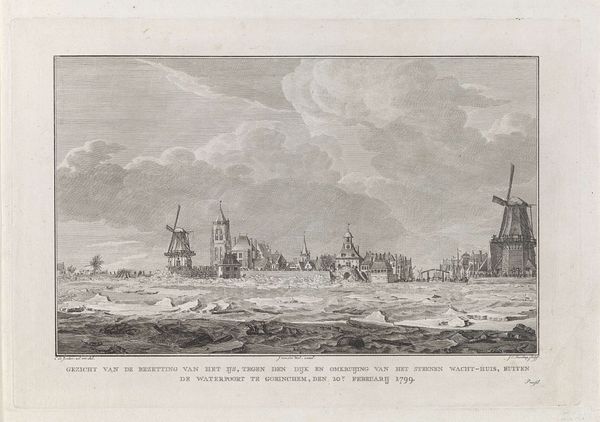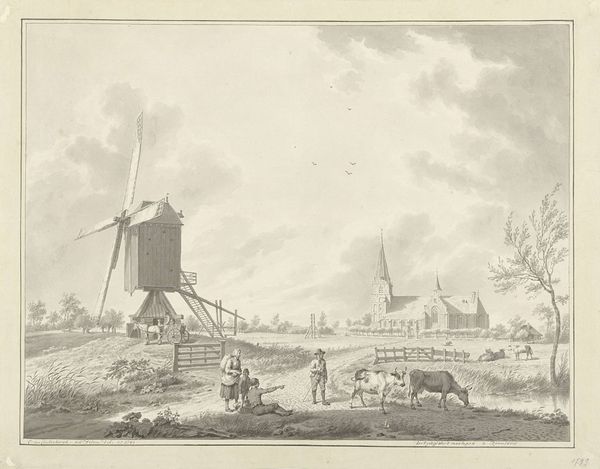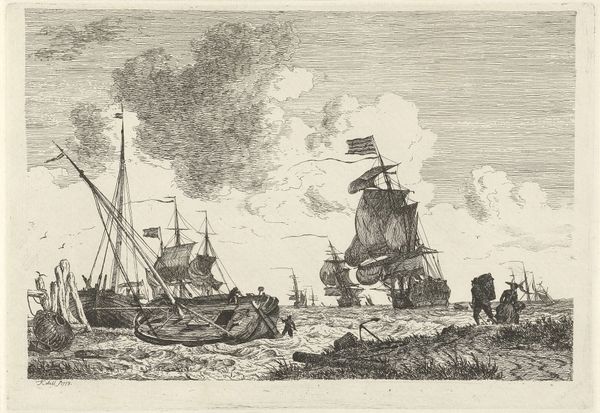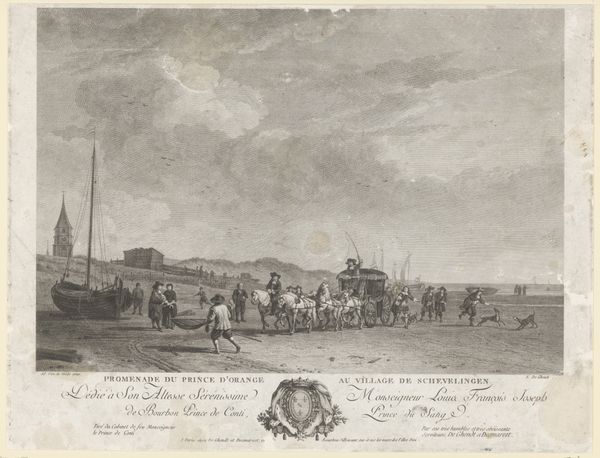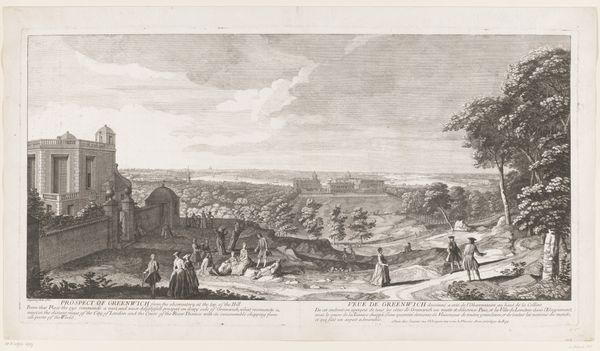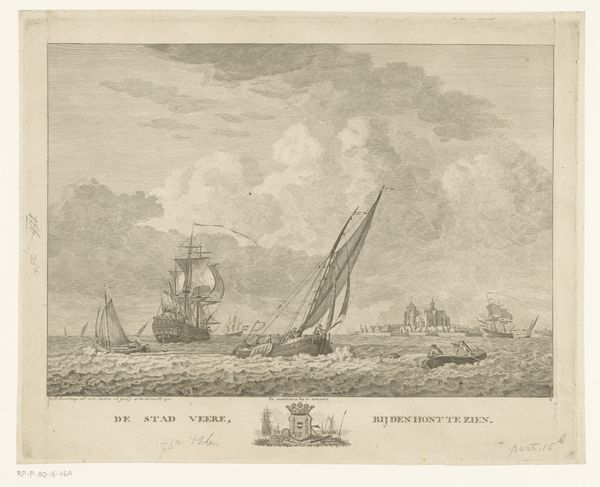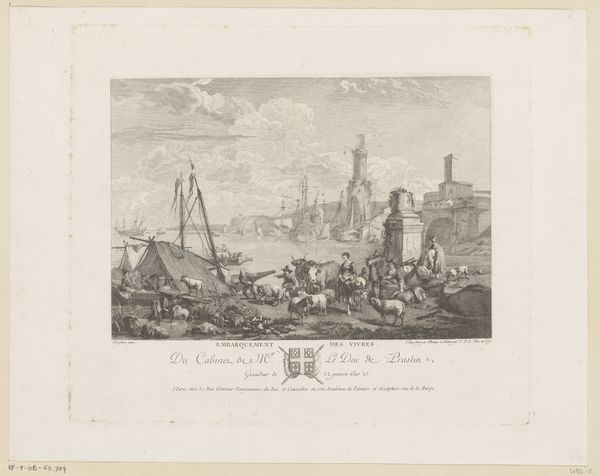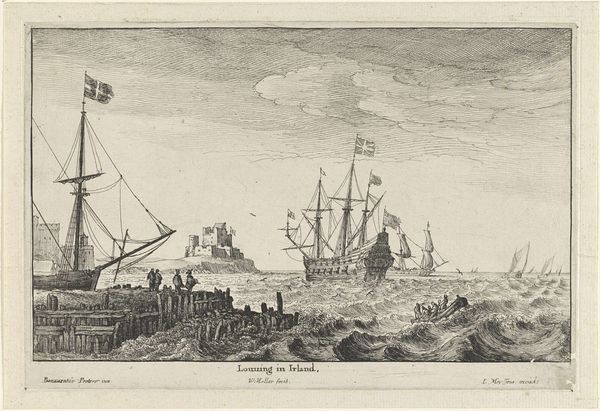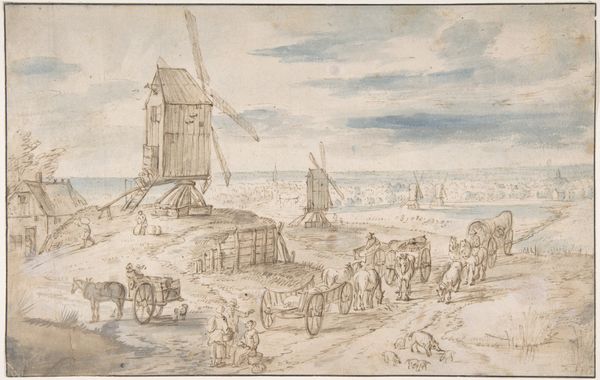
Second View of the Surroundings of Bruges (IIe. Vue des environs de Bruges) 1700 - 1780
0:00
0:00
drawing, print, engraving
#
drawing
#
baroque
# print
#
landscape
#
engraving
Dimensions: Sheet: 12 1/4 x 16 1/8 in. (31.1 x 41 cm)
Copyright: Public Domain
Curator: This finely wrought image is entitled "Second View of the Surroundings of Bruges," dating from sometime between 1700 and 1780. The hand of Jacques Philippe Le Bas is responsible for it, skillfully realized using engraving on laid paper. Editor: It's incredibly detailed! My immediate reaction is to the everyday scenes it captures - there's a feeling of observing daily life rather than grand events. Almost voyeuristic in a way. Curator: Precisely! This work fits squarely within a broader context of increased print production and consumption during that era, with its purpose to serve a growing market eager for views of both local and distant locales. These images played a crucial role in shaping social identities and perceptions. Editor: Looking at it, you can really appreciate the material labor involved. Notice the precise hatching and cross-hatching; they bring volume and life to these mills and workers. It's not just about capturing the landscape but about depicting a functional part of the economy. What materials were at play in constructing those windmills, what purposes did they serve for the residents? Curator: Beyond depicting everyday scenes, "Second View..." offers a snapshot of the social and political landscape of the time. Bruges, as portrayed here, is as much an idea, a strategically and commercially important town, as it is a geographical reality. Editor: That interplay of the economic with political or social control is fascinating. Art serving as documentation of resources, production, class, and societal events—the materialist lens brings this artwork to life, illustrating how images like this supported certain political viewpoints by highlighting industry and rural labor. Curator: The politics are evident in the elaborate dedication included within the engraving, directly referencing Louis, a prince of the blood, connecting this seemingly straightforward landscape to a web of power and influence. Editor: Seeing this print today allows us to reconstruct something of that history—the economics, the societal structure, all intricately linked in one captured scene, which goes beyond merely describing a picturesque landscape to being a historical document of the relations between labor, material and representation. Curator: It reveals the complex relationship between art, politics, and place. It’s really about context, not just the view, that shapes its deeper meaning. Editor: Exactly. By looking into the details, we understand better not only art production, but labor and consumption and a social order of the moment, made possible because the hand meets materials.
Comments
No comments
Be the first to comment and join the conversation on the ultimate creative platform.


